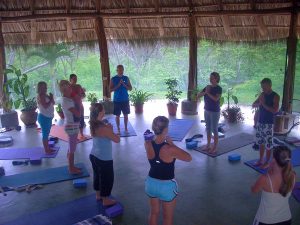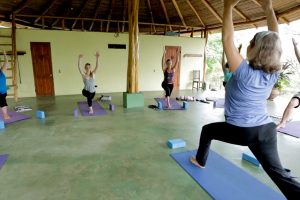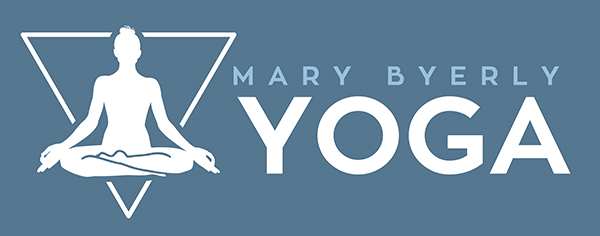In one of my earlier articles, I wrote about the Yamas and Niyamas, yoga philosophy’s moral underpinings from the Sutra of Patanjali. This article will focus on one of the Niyamas (personal observences), Saucha, sometimes translated as purification or cleanliness.
Donna Farhi writes in Yoga Mind, Body, & Spirit:
“Practicing saucha, meaning “that and nothing else,” involves making choices about what you want and don’t want in your life. Far from self-deprivation or dry piety, the practice of saucha allows you to experience life more vividly. A clean plate enjoys the sweetness of an apple and the taste of pure water; a clear mind can appreciate the beauty of poetry and the wisdom imparted in a story; a polished table reveals the deep grain of the wood. This practice both generates beauty and allows us to appreciate it in all its many forms.”
Many people think of purification as having to be, well, pure. This may be one of your aims in life. Clean eating, or only eating organic and local food is a great way to bring in the essence of purity or saucha into your body. Considering the kinds of people you surround yourself with, the types of entertainment you watch, hear, and participate in is another way to bring in the quality of Saucha. Yet, if you are reading this and thinking that you aren’t cut out for going all the way to the monastery yet with this Niyama, consider perhaps the baby steps that may be doable for you.
 In yoga studios, there are often guidelines which embody this Niyama, asking students to come to class clean, without any strong odors, even from perfumes, colognes, or lotions. This beginning step towards Saucha ensures that everyone can enjoy the class environment (especially the deep breathing). This is done for common courtesy, yet can also be one way to understand the intent of Saucha and to remember this as you shower or get prepared for your practice. You may also consider for yourself how you can take the spirit of Saucha in your mind as you step onto your mat, allowing yourself to try to stay absorbed in the intent of your practice, rather than thinking of the list of things you want to do after your practice.
In yoga studios, there are often guidelines which embody this Niyama, asking students to come to class clean, without any strong odors, even from perfumes, colognes, or lotions. This beginning step towards Saucha ensures that everyone can enjoy the class environment (especially the deep breathing). This is done for common courtesy, yet can also be one way to understand the intent of Saucha and to remember this as you shower or get prepared for your practice. You may also consider for yourself how you can take the spirit of Saucha in your mind as you step onto your mat, allowing yourself to try to stay absorbed in the intent of your practice, rather than thinking of the list of things you want to do after your practice.
As a teacher, I also look at the how the physical environment of the room itself can help set up an atmosphere of orderliness and clean energy flow. If mats are set up facing different ways, not in either lines or a circle, I have observed students being more distracted, and often less able to keep their energy and focus within what we as a group are doing. I typically will ask students to set up their mats in an organized circle. This allows for the energy of the room to flow evenly around all of us, and also seems to contribute to a feeling of everyone working in harmony during the class.
In your home practice, look at how you can arrange your mat in a place that is clean and orderly, and in harmony with your surroundings. It is also good to keep your mat itself clean. See how you may feel differently in your home practice if you first take a couple minutes to assure that your space is tidied up. This actually is as much a ritual for me at the beginning of my practice as setting out my mat! I find myself much “clearer” in my mind when I am not looking at my dog’s hair on the floor.
I also teach beginning students to be mindful as they walk to the closet for props or go to the wall. They learn to walk around others mats, thus keeping their feet off of another’s mat, as well as respecting the energetic “space” of another student. I do even try to encourage students to put away their props and mats at the end of the class neatly. I suggest that you also do this in your home when you practice there. Perhaps respecting your practice equipment and environment will transfer to awareness and respect of your surroundings in the rest of your day.
 As we do in class, you can also separate your yoga practice from the rest of your day, thus keeping your practice “clean”. We do this through chanting the sacred word “Om” to begin and saying “Namaste” at the end. Finding your opening and closing rituals for your home practice can have the same impact, whether it be through lighting incense, candles, or even reading an inspirational passage before you begin. You can also find meaningful ways that work for you to close your practice, whether it be through bowing in gratitude to your inner teacher or in simply sitting in silence for a moment to allow yourself to transition off of your mat.
As we do in class, you can also separate your yoga practice from the rest of your day, thus keeping your practice “clean”. We do this through chanting the sacred word “Om” to begin and saying “Namaste” at the end. Finding your opening and closing rituals for your home practice can have the same impact, whether it be through lighting incense, candles, or even reading an inspirational passage before you begin. You can also find meaningful ways that work for you to close your practice, whether it be through bowing in gratitude to your inner teacher or in simply sitting in silence for a moment to allow yourself to transition off of your mat.
I have found that through the years my working consistently with these simple approaches has helped me to clean up a lot more things in my life. I now recognize when my shelves of clothes are getting disordered and love how it feels when I go through them, donate what I don’t use, and make them neat once more. I recognize when I am holding onto so many objects that it is tough to keep my home area clean. It has gradually transformed the way I eat much of the time, though I do still enjoy things like pizza and French fries every once in a while! I embody Saucha in the ways that feel right for me, without feeling that I am denying myself things that I love and enjoy. I hope that you can find your path to this as well.

